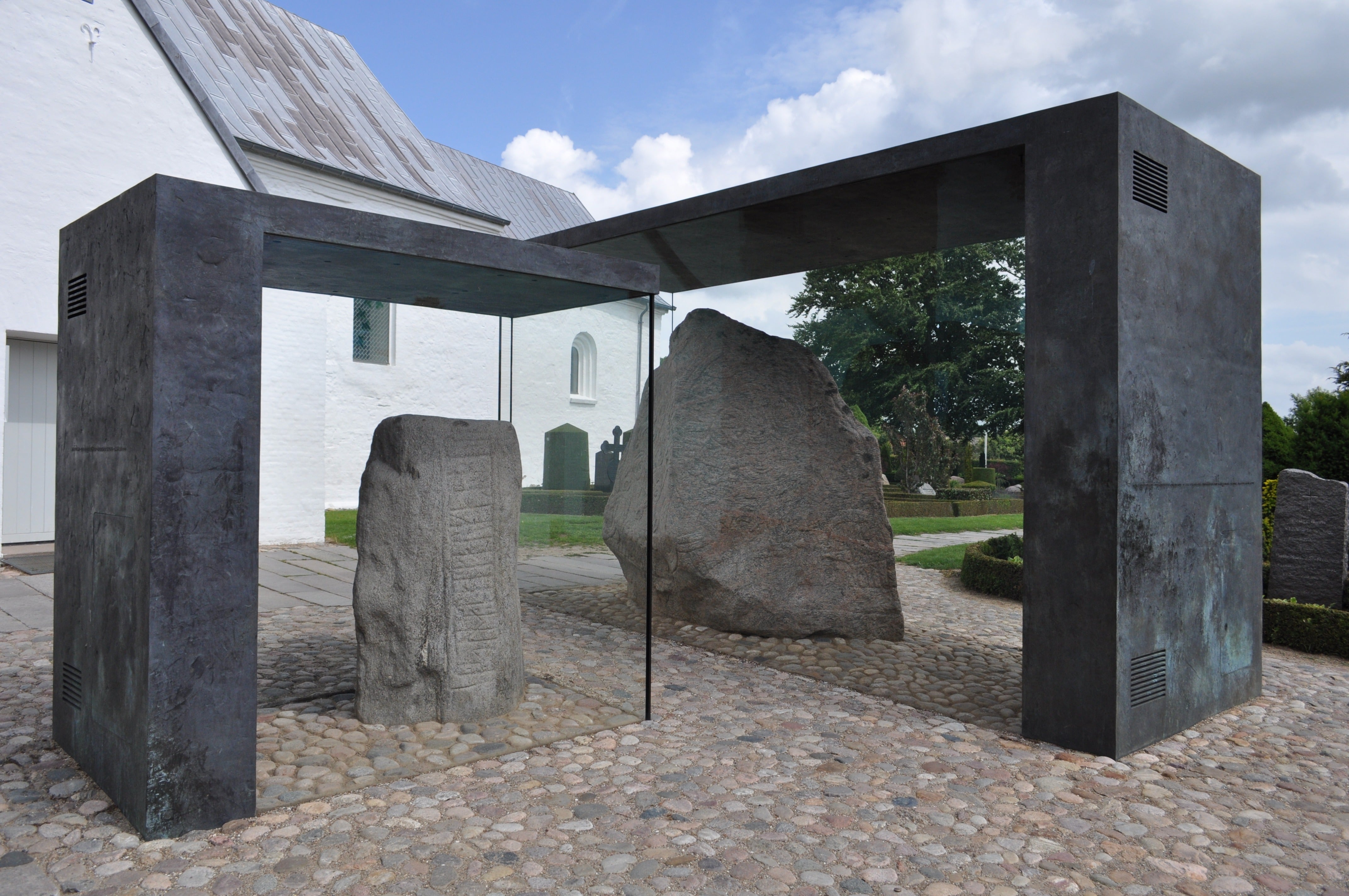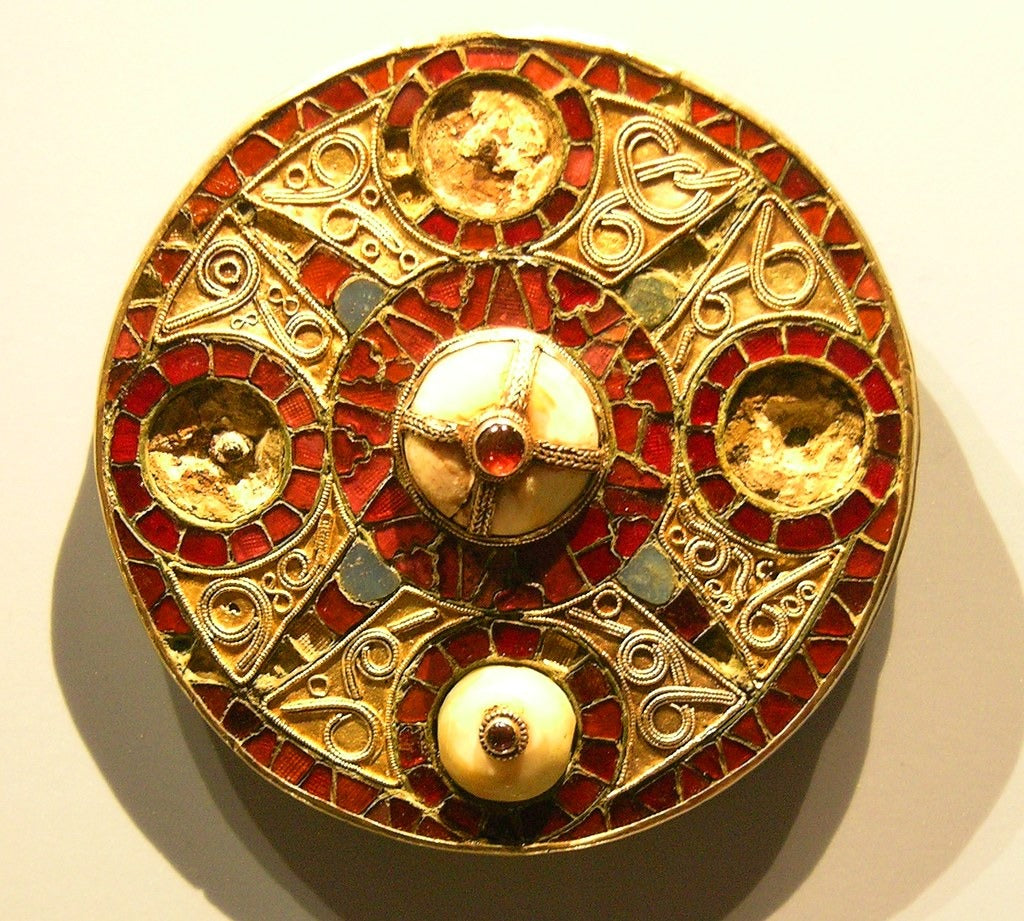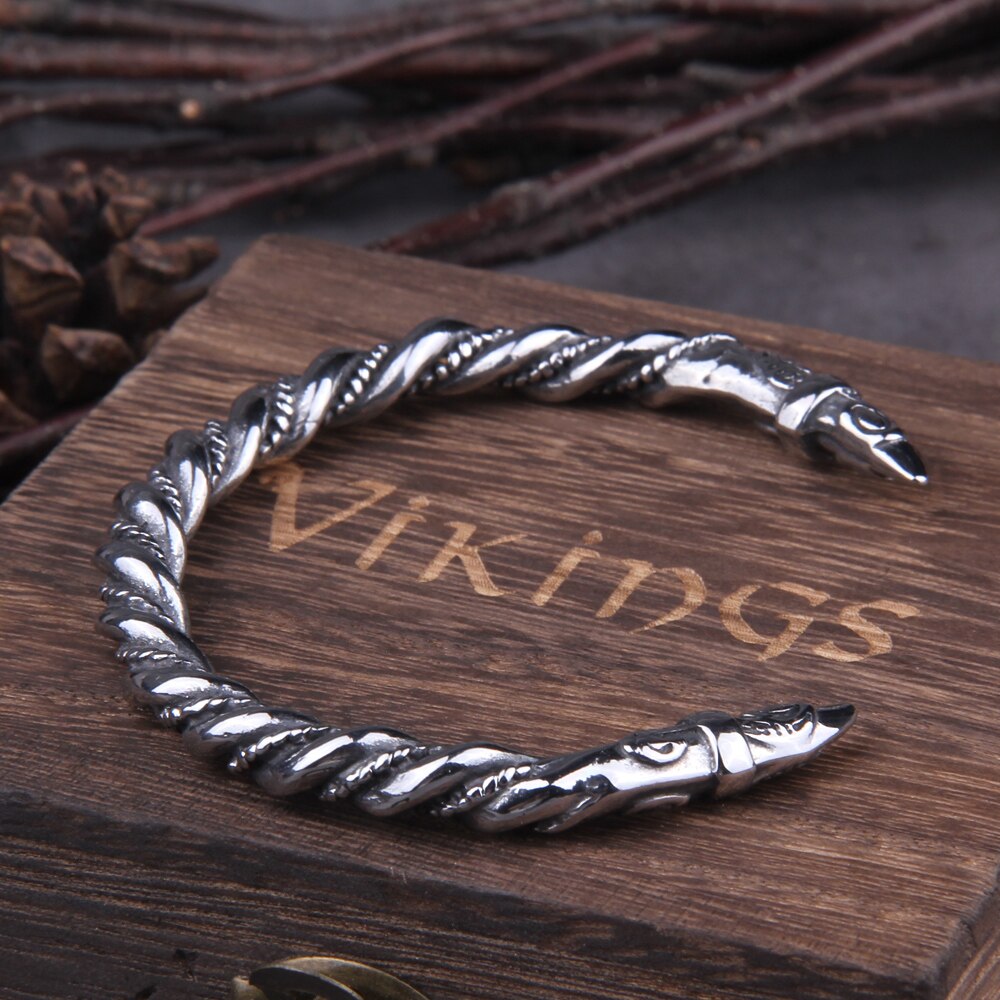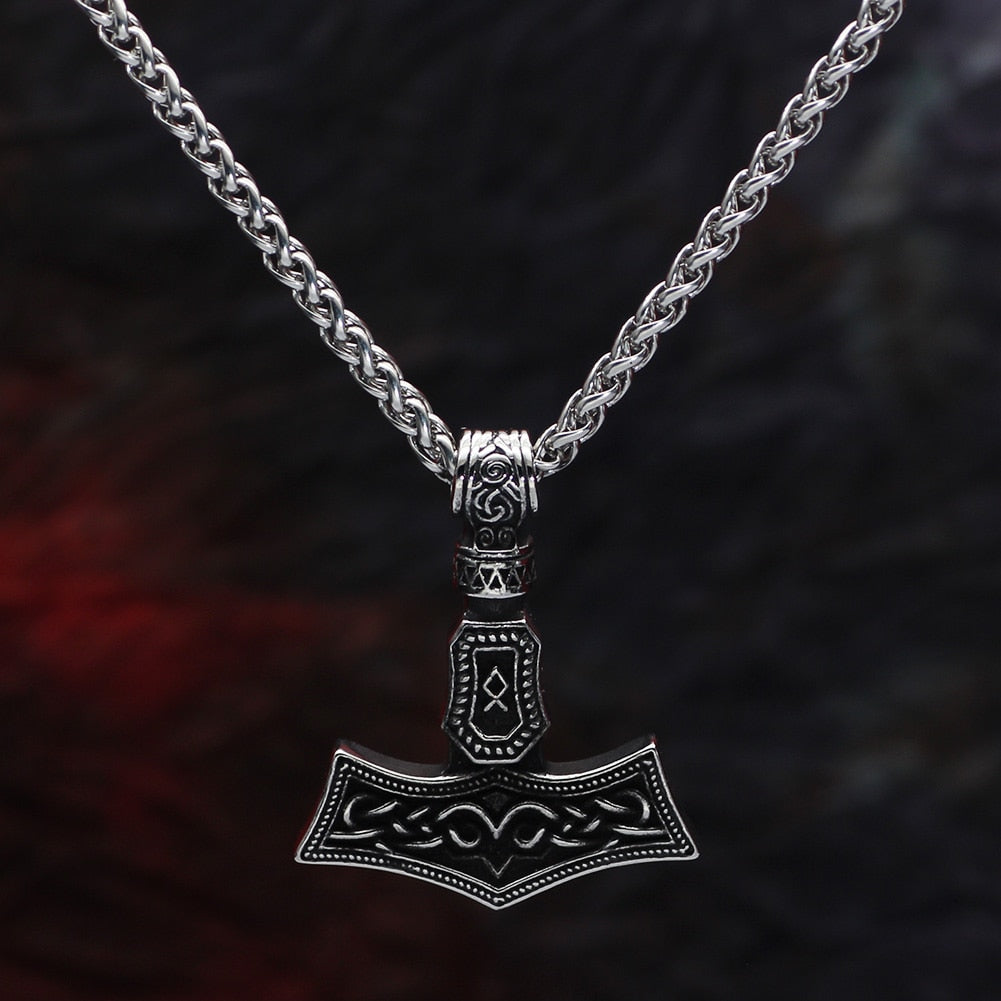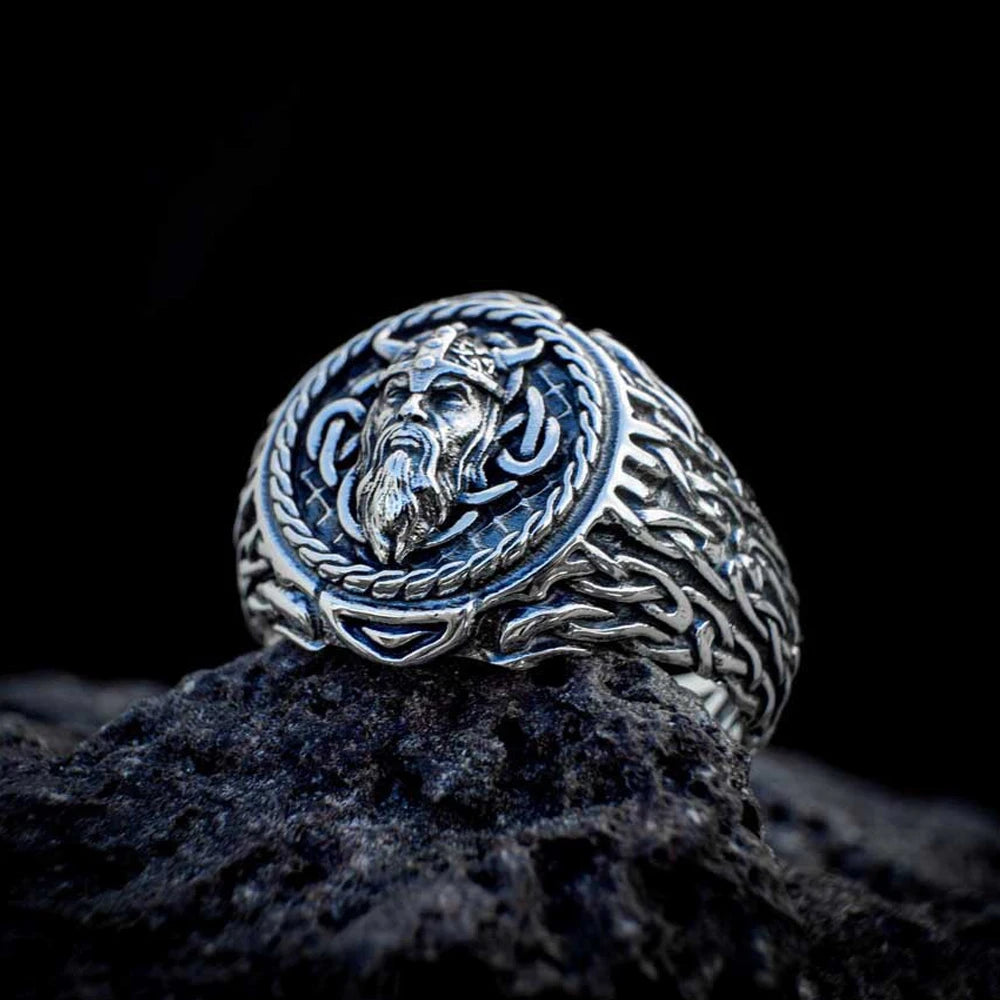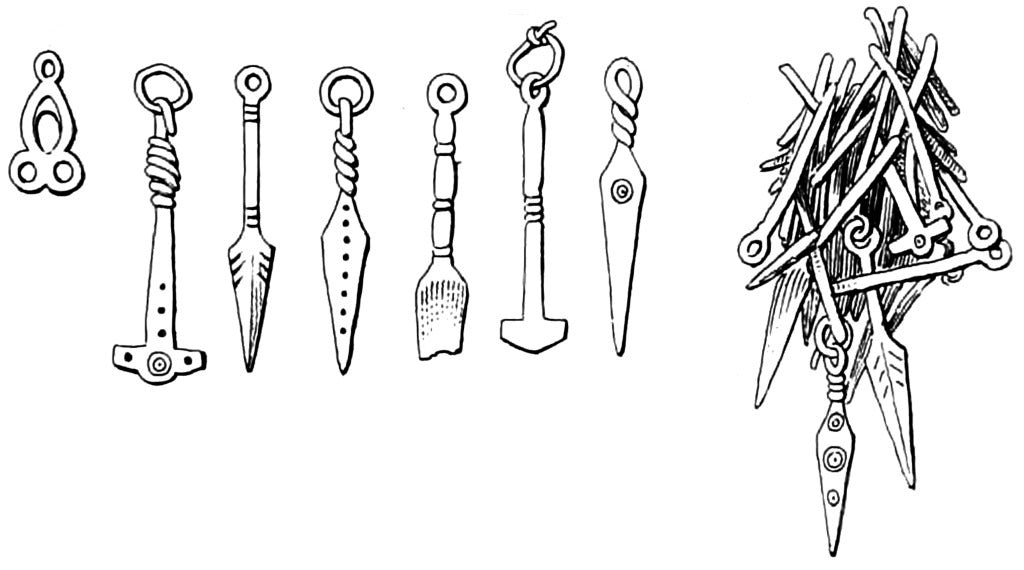
The Gilton Amulets: Anglo-Saxon Symbols of Thor and Gungnir
In 1760, antiquarian Bryan Faussett excavated a cremation burial at Gilton, Kent, uncovering what would become one of the most discussed early Anglo-Saxon grave finds in England. Within a decorated funerary urn, he recorded a set of small, highly distinct amulets—now lost but preserved through his detailed drawings in the Inventorium Sepulchrale. Among these were stylized miniature weapons, interpreted by modern scholars as representations of Thor’s hammer (Mjölnir) and Odin’s spear (Gungnir), crafted not by Viking hands but by Anglo-Saxons themselves during their pagan period in Britain.
This assemblage is exceptional not only for its content but also for its context. Anglo-Saxon weapon-amulets are exceedingly rare, especially when unconnected to later Norse cultural influence. The Gilton examples appear in a mid-6th-century cremation burial—long before the Viking Age—and provide a rare glimpse into a native expression of pre-Christian belief from the Jutish settlers of Kent, whose religious and artistic practices formed a distinct strand within early Anglo-Saxon England.
The Lost Amulets: Surviving Only in Sketch

Although Faussett carefully documented the grave’s contents, the physical artifacts themselves are no longer extant. Many of Faussett’s finds were later acquired by the Ashmolean Museum, but for reasons unknown, the Gilton amulets were either lost, miscatalogued, or separated from the rest of the collection. Today, the only surviving record of these amulets comes from his 18th-century illustrations, which show at least eight items arranged together, likely as a symbolic bundle.
Despite their loss, the drawings are detailed enough to allow typological analysis. The amulets include three hammer-shaped pendants, three spear- or dagger-like forms, and a ringed element. This ring is not likely decorative—rather, it may have served a functional role. During the early Anglo-Saxon period, such charms were commonly worn at the waist, suspended from belts or girdles rather than around the neck. The ring was likely a suspension device, from which the grouped amulets hung together as part of a belt-set or tool-kit of symbolic items (similar devices have been found in Scandza). The uniform scale and close proximity in Faussett’s illustration support this interpretation, suggesting the items were bundled and deposited together with intent, not scattered loosely in the urn.
Uniquely Anglo-Saxon Forms
What sets the Gilton amulets apart is their distinct form and cultural setting. All of the hammer pendants feature long handles with relatively small, rectangular heads—a design quite different from the compact or stylized forms of Mjölnir that became common in the Viking Age. Rather than resembling the mythic, short-shafted thunder weapon popularized in later Norse mythology, these Anglo-Saxon examples more closely recall working hammers or smithing tools, suggesting a different visual tradition or symbolic emphasis.
Alongside the hammers are three spear-like amulets, some with leaf-shaped blades and others resembling barbed points. They all appear to be stylized versions of Gungnir, Odin’s spear—a powerful symbol of divine authority and fate. The joint appearance of both Mjölnir and Gungnir in a single burial context suggests a deliberate invocation of the two highest gods in the Germanic pantheon: Þunor (Thor) and Wōden (Odin). This pairing is rare in the Anglo-Saxon archaeological record, making the Gilton find not only unique in its composition but potentially reflective of a highly personal or familial religious statement.
Not Imported—But Indigenous

Unlike later hammer amulets introduced by Scandinavian settlers in places like Lincolnshire or York, the Gilton pendants show no signs of being imports. Their simple twisted shafts, stamped ornamentation, and functional proportions are consistent with early Anglo-Saxon metalwork traditions. While continental Germanic parallels have occasionally been cited—especially in Alamannic or Thuringian graves—none so far exhibit the same grouping or concentration seen at Gilton. If similar items existed on the continent, they likely served different purposes or appeared in isolation.
This makes the Gilton find especially valuable. It reveals that Anglo-Saxons, during their own pagan period, were already producing religious amulets that aligned with wider Germanic symbolic systems but expressed in their own way. They were not passive inheritors of Scandinavian religious trends, but active participants in shaping local expressions of mythic belief.
A Fragment of Forgotten Faith
The Gilton amulets represent one of the few surviving glimpses into the private religious life of early Anglo-Saxon England. Their placement in a cremation urn suggests that they were not decorative but carried real spiritual or votive significance—perhaps as protective symbols for the dead, emblems of divine loyalty, or ancestral talismans. That they were lost to time, preserved only through Faussett’s pen, is both a tragedy and a testament to the diligence of early antiquarian record-keeping.
Despite the absence of physical artifacts, the Gilton amulets continue to shape modern understanding of Anglo-Saxon paganism. They show that weapon symbolism—particularly Thor’s hammer and Odin’s spear—had penetrated into early English religious practice in native forms, distinct from those that would later become iconic in Norse art and literature. In doing so, they serve as a powerful reminder that the mythologies of Northern Europe were never monolithic, but constantly adapted by the people who carried them across land and sea.
ᚸ
References
Faussett, Bryan. Inventorium Sepulchrale: An Account of Some Antiquities Dug Up at Gilton, Kingston, and Barfreston in the County of Kent. London, 1856.
Roter Geysir. “Early Thor’s Hammer Pendants Outside Scandinavia.” https://rotergeysir.net/early-thors-hammer-pendants-outside-scandinavia/
Meaney, Audrey L. Anglo-Saxon Amulets and Curing Stones. Oxford, 1981.
Hines, John. The Anglo-Saxons from the Migration Period to the Eighth Century: An Ethnographic Perspective. Boydell Press, 1997.
